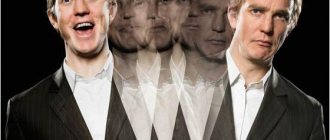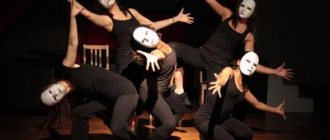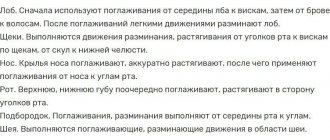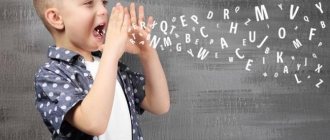Developed facial expressions are a useful quality not only for a theater artist, but also for any person who, due to duty or hobby, often has to perform in public. Mimic expressiveness plays no less a role than speech, since it reflects the emotional life of the artist during the performance and emphasizes the meaning put into the words.
In everyday life, facial expressions are a means of non-verbal communication between people: it is through them that we understand what emotions a person experiences before he begins to speak. The instant and uncontrollable facial reaction of the facial muscles to any event makes facial expressions the most accurate indicator of a person’s mood and his attitude towards something. However, future artists often require additional development of facial expressions.
“The face is the mirror of the soul.” Cicero
If in life facial expressions are our constant companion, then in imitation of life, which is almost any public performance, the absence or lack of facial expressions is the first sign of falsehood.
Imagine Romeo declaring his love with a straight face, or Hamlet during his famous monologue “To be or not to be” with a facial expression a la “Semyon Altov”. Any tragedy with such a game is doomed to turn into a comedy, and vice versa - a comedy risks becoming tragically boring. That is why the facial expressions of actors require development, and this is given the same great attention as the development of correct speech.
How to develop facial expressions
- Do facial expressions age you?
- Facial exercise
- Studying emotions
- Guessing game
- Learn to do what you don't know how to do
- Bad facial habits
Facial expressions are a powerful tool for expressing emotions and feelings, which can be more eloquent than any words.
It is not for nothing that there is a separate genre of theatrical art - pantomime. A mime can make audiences cry and laugh by acting out the performance with his face. Imagine how impoverished communication will be if you deprive it of additional ways of conveying your internal state - intonation, gestures and facial expressions. There are many professions for which the ability to control facial expressions is very important. This is both a vivid expression of emotions, and vice versa - the ability not to reveal one’s feelings. Actors, teachers, managers, diplomats, businessmen, TV presenters... But not only for work you need to know how to train facial expressions - everyone should be able to convey their feelings beautifully and reliably. In parallel with facial expressions, it is necessary to develop the speech apparatus - these two mechanisms are inextricably linked with each other. For example, there is a therapeutic complex of facial exercises for children with dysarthria - a disorder of pronunciation function. There is a “mutual guarantee” between speech and facial expressions: the clearer the speech, the better developed the facial muscles and vice versa.
But before we find out how to develop facial expressions, let's deal with an issue that worries many.
Inspiration
The issue of beautiful photographs is quite voluminous and complex. Try it, look for your own poses that will inspire you. When you are passionate, then you will definitely get great photos! If you want to take a photo as a couple, the pose option is here.
Have a nice day and suggest your options for win-win poses. I am especially interested in options with girls of non-standard appearance. Write your thoughts about this in the comments. See you soon in new interesting reviews.
Ivan was with you.
Do facial expressions age you?
There is an opinion that lively facial expressions quickly age a person: where folds often appear, deep wrinkles form over time. Is it so?
In order not to be unfounded, let's compare film actors known for their facial skills. Jim Carrey comes to mind first. He is in his early 50s and already has noticeable wrinkles, especially around the eyes. The actor himself admits that his career as an actor with the most expressive face gave him wrinkles. But at the same time, Kerry never had plastic surgery or Botox injections - since they make facial expressions more constrained, this is strictly contraindicated for a movie star. In order to slow down the aging process, Kerry uses creams.
Jackie Chan is another person with rich facial expressions who is always smiling. He is a little over 60 years old, but he looks great. Of course, he also has facial wrinkles, but throughout his life Jackie has only performed operations related to injuries - no plastic surgery.
The ever-present Johnny Depp is also slightly over 50, but it’s hard to believe - it seems that he is at most 40. But there is one secret - Captain Sparrow had plastic surgery: a facelift, eyebrow lifting and blepharoplasty (around the eyes).
But the actor famous for his almost complete lack of facial expressions - Keanu Reeves - does not age at all. He is the same age as Depp and Kerry, but at the same time he looks 30. They say that Neo does not disdain Botox, but the actor himself does not admit it. His main acting tool is his eyes.
Indeed, certain facial habits leave an imprint on the face - but this happens within the allotted time, when a person develops natural wrinkles, and not earlier. And what kind of wrinkles they will be is up to you to choose: either deep furrows from a gloomy frowning forehead, or charming rays around the eyes from laughter. And don’t forget that actors known for their ability to make faces have been doing this professionally all their lives. They filmed millions of takes and grimaced much more than a person would need in everyday life. Imagine Jim Carrey in his office. Did you laugh?
Those who are afraid of losing their youth need to remember additional factors - heredity, skin type, exposure to the sun, facial care. Massage, anti-aging treatments, creams and oils will help you not be afraid of the appearance of early wrinkles.
Tricks from fitness blogs
A few words about popular blocks with photos. For example, fitness models. Does everyone understand that these beautiful girls don’t look as perfect as in the photo?
It's not just about Photoshop, although the most illiterate people also turn to it. It's all about the pose, angle, lighting and so on. Tighten your stomach, wear pants with a higher waist, choose good lighting for yourself.
Anyone with a more or less standard figure can look like a blogger. In what ways?
Head
The head is slightly sideways to the photographer, the ideal angle is 45 degrees.
Lifehack to remove excess chins and emphasize your neck. We stretch our neck and slightly lower our chin. It is better to rehearse your smile in advance in the mirror. Such a slight half-smile, in the photo - example above, right image. Always looks great!
Due to the natural asymmetry of the face, it is better to turn around in the mirror in advance and choose a more attractive side.
Hands
Oddly placed hands can ruin any photo. How to put your hands?
- In your pockets. Remember that your elbows should be behind your body.
- Something to hold. Bag, coffee, accessory. And the second hand in your pocket or on your belt. Elbows behind the body!
- On the belt. But! First, elbows behind the body. And, secondly, one hand is on the belt, and the other is somehow different. Stretched out, with coffee... but not waist-length. The exception is photos for professional clothing models, but we’re all amateurs, aren’t we?
- One arm is bent below the chest, the other to the chin or extended.
- Hands together, as if we are about to clap our hands.
You could write a whole book on how to place your hands. But in general, you need to look at all your fantasies in the mirror, choose the ones you need and then listen to the experience and trained eye of the photographer.
Legs
The universal rule is that one leg is slightly bent and definitely not at the same level as the other. It is better if the legs do not overlap each other.
Let's leave complex figures to professional models! I recommend transferring your entire body weight to one leg, and to the one behind you. About standing poses you can read:
Facial exercise
In order to develop your facial expressions, you first need to make your face more mobile and loosen your facial muscles.
Athletes do a warm-up before training - let’s do this too. You need to stand in front of the mirror, put your hair in a ponytail, and pin up your bangs. The entire face should be visible. Start vigorously moving different parts of your face, trying to develop as much amplitude as possible. Here are examples of such movements:
- Raise and lower your eyebrows;
- Open and close your mouth wide;
- Smile as widely as possible without exposing your teeth, then sharply fold your lips into a bow or “duck”;
- Open your eyes wide and squint.
It is important that when exercising on a certain part of the face, the rest are not involved. At first, this can be difficult - some muscles “pull” others along with them, and together with your eyebrows, for example, you begin to reflexively raise your lips.
Imagination
It is difficult to imagine an actor who does not have developed imagination and fantasy. After all, he constantly needs to believe in something that actually does not exist. Only the true faith of the actor himself, his complete immersion in the role and in the situation will make the viewer believe that this is Hamlet, and not a strange boy in funny pants; King Lear, not a grandfather who looks like Santa Claus, and so on.
There are no people who have no imagination at all. But there are people in whom it is poorly developed. To imagine the truth of a situation and yourself as the main character in it, imagination needs to be developed. First of all, this is done through observations, writing fairy tales, poems, stories, and reading good authors. Then work begins with acting sketches. A sketch is a small sketch in which the actor must act organically, which means he must believe.
We can say that the main exercise for a beginning actor is a sketch. It can be different: for an objectless action, in conditions of justified silence, with words and with objects, single and paired. The main thing is that the sketch has a plot and an event. At the same time, the actor must come up with a situation himself (or work in a given one) and behave in it naturally and organically, and for this he must believe that he, in the image of the hero, really found himself in such a situation.
Studying emotions
As you remember, we will need the development of facial expressions primarily in order to colorfully convey emotions. Therefore, you need to learn the appropriate facial expression and learn to apply this skill in communication. Many people do not know how to convey emotions “to order”: you ask them to portray anger, but it turns out to be a comical mask. This is because they don’t know what they look like from the outside. We will eradicate this problem with the help of the following exercise.
Stand in front of the mirror and try to portray the following emotions:
If you are not satisfied with the result, look at the actors' faces in certain situations and try to imitate their expressions. If you can’t evaluate the results of your work in the mirror, take a selfie; it’s easier to draw objective conclusions from a photograph.
At sessions, the fashion model is obliged to depict all the feelings and states that the photographer gives her: “Give me some tenderness! Innocence! Aggression! You saw a kitten! They gave you a car!” And she must perform all this no worse than a Hollywood film star.
Many people think that models only need beauty and figure, but the ability to be photogenic and control your face plays a very important role in this profession. Try to be a fashion model and portray all the emotions and reactions that come to your mind.
Why is it important to know how to pose?
Many people refuse to take photos, arguing that they are “unphotogenic.” Do you know why this is a failed strategy? Because everyone has cameras today! Smartphones, tablets, even some watches.
You can always refuse, but with such a dominance of cameras, you can earn quite a bit of paranoia. And still get your pictures from time to time, for example, in a company.
It’s much calmer for the psyche to spend half an hour reading this material, rehearsing in the mirror and never again being afraid of turning out badly. There is no way to avoid photos. It's up to you to decide whether these will be good photos or a whole folder of horror stories for your grandchildren.
Bad facial habits
To have beautiful and expressive facial expressions, you need to get rid of habits that spoil your facial expression and cause early wrinkles. Many of us squint, wince, grimace and frown without even realizing how much it harms us. If you know such habits, control them. And in order not to relax, periodically squint or wince in the mirror - see how ugly it is, and you will immediately have an incentive to get rid of these grimaces. If you constantly forget about self-control, ask someone close to you to remind you. Mothers deal with this best - they are more concerned than anyone that their children be beautiful and charming.
*** Everyone has facial expressions - they are embedded in the brain in childhood, when babies look at their parents and copy their facial expressions. But uncontrolled facial expressions are like an ill-mannered person - they will always find where to make trouble. You can compare it to a horse riding a rider - instead of making life easier, uncontrolled facial expressions complicate it. They say about such people: everything is written on his forehead. And he would like to hide his feelings, but he cannot.
Its role should not be belittled - just the ability to correctly use facial expressions can significantly change a person’s fate. And you can start learning this skill at any time, regardless of age.
PS Find out “What is artistry and how to develop it”
If you find an error, please select a piece of text and press Ctrl+Enter.
Which side to turn
We will leave the frontal photo for important documents. Does everyone remember how “beautiful” we look in our passports? So let's not repeat this mistake in those photographs where we want to turn out beautiful.
Most of all, girls want to look natural, but fake photos turn out, at best, like those in a passport. We are not professional models.
Models used trial and error to find the ideal facial position in the photo. The head should be turned approximately 45 degrees towards the photographer. Something like this:
Of course, you don’t need to walk in front of the photographer with a protractor, but it won’t hurt to rehearse in front of the mirror. Or take a selfie.
I especially recommend taking selfies for guys, this will save them from looking in the mirror for a long time, and the resulting photos are easy to look at and analyze.
The same applies to the whole body. Yes, and it would be strange to stand directly in front of the photographer and look somewhere to the side. So the whole pose is not straight, but slightly turned to the side.
This, by the way, is a standard pose for photos on the red carpet. And if the most popular people in the world have been using this trick for decades, why shouldn't we?
How do emotions show on the face?
The psychology of human behavior is limitless. To fully study the secrets of facial expressions as one of its sections, it will take more than one year. Meanwhile, you can learn to understand your interlocutor by a glance or a hidden grin if you know about some nuances.
Firstly, the key to a correct understanding of what a person would like to say is an objective assessment of everything he reproduces, taking into account the relationship between speech and facial expressions. Secondly, people are able to express emotions that arise in the soul in two ways:
This means that if the partner wants not to reveal his true attitude to the information being communicated, he can limit himself to the simplest hint. But more often than not, this method is more misleading than effective.
How to look good and beautiful in photographs: poses
Learn to change your emotions
Various poses in the studio
Poses for pregnant women
Options for lovers
How to determine the truth of information by facial expressions?
Before saying something, in most cases a person thinks about his words and tries to keep his facial expressions under control as much as possible. At the same time, it can be extremely difficult for the interlocutor to keep track of several reactions at once. Psychology will come to the rescue, teaching you how to properly develop the ability of facial “language” or identify a sincere attitude towards something by facial expressions.
Reactions that appear spontaneously or involuntarily in the interlocutor can be correctly read only if there is a long-term relationship with a partner. If you do not take this point into account, there will always be a possibility of critical self-deception in the process of deep recognition of your partner.
It is not difficult to determine the degree of personal expression from the facial expression of a human face, but it is extremely important to take into account many associated factors. It turns out that women have a much harder time managing their emotions than men. It is difficult for representatives of the fair sex to hide their existing experiences, so their face more clearly reveals its owner in a given situation. In addition to gender, other factors also play a role in the success of withholding information:
- temperament (it is easier for a phlegmatic person to protect his feelings from prying eyes than, for example, for a choleric person);
- additional related circumstances;
- experience of the receiving party.
Excessive emotionality
Usually our emotions are reflected in facial expressions.
We can even carry on a conversation without uttering a word - frowning eyebrows or narrowed eyes will say everything for us. From a communication point of view, active facial expressions are good; people like the emotional involvement of their interlocutor. However, this can seriously affect our appearance. “They are busy with their faces,” the actors say about those who like sweeping, overly active facial expressions. They know: you won’t get an Oscar for over-acting emotions with your face, they are too pretentious.
If active facial expressions are useless even on stage, why use them in life? After all, the skin “remembers” our every facial movement.
How to learn to understand facial gestures?
Facial expression, as psychology says, is predetermined by the influence of experienced feelings, which provoke controlled contractions and relaxations of muscles. Many people want to master the ability to control their emotions by performing special facial exercises. However, all the measures taken to teach the subtleties of facial expressions will not be successful if you do not know about other important points.
For example, facial symmetry in displaying feelings helps to recognize a lie much faster. In addition, lips can give away a person’s desire to disguise.
For example, increased facial expressions in the mouth area allow us to conclude that the speaker is worried about something. Lips curved in one direction indicate a skeptical or mocking attitude towards what is happening.
Exercises for developing theatrical skills
| Ten masks for an actor |
These are the masks (facial expressions) that will surely come in handy when acting in Christian theater. Be sure to discuss each mask with the group. Discuss in detail: how should an actor look? Should he blink his eyes? Should he lower his eyes? Should I open my mouth? Should I raise my eyebrows? Etc.
So, we offer the following masks, from which you need to choose the 10 most commonly used, in your opinion.
- Fear
- Anger
- Love (in love)
- Joy
- Humility
- Repentance, remorse
- Cry
- Shyness, embarrassment
- Meditation, reflection
- Contempt
- Indifference
- Pain
- Drowsiness
- Petition (you ask someone for something)
Remember what your face looks like in the mirror when you create these masks. When playing on stage, you must produce in your memory all the masks correctly and expressively. Remember the movements of your facial muscles. Draw them during the game as you did in front of the mirror. Then you will do it involuntarily.
Study your face
It is very important for an actor that his face is expressive. If a person expresses his emotions well on his face, then it is easier for the viewer to understand the scene.
Let's examine our face. I recommend this exercise as one of the first exercises on facial expressions. Why do you need to know your face? We do not always know how we look in a given situation (when we are surprised, for example, or when we are angry). Having studied his facial expressions and corrected them, the actor will be sure that when playing anger in a scene, he is portraying anger on his face, and not fussiness, for example. In my practice, I have met people who depicted some emotions on their faces in a non-standard way, not like everyone else. For example, let’s feign surprise. What do you do when you are surprised? The mouth is slightly open, the eyebrows creep up, the eyes open wide. This is a common facial expression. If an actor plays like this, the audience will understand that he is surprised. But I know a guy who, instead of surprise, could read something completely different on his face. He did this with his eyes, as if he was flirting. In this case, the viewer may not understand the scene correctly. Therefore, you need to study your face. So, let each actor bring a small mirror with him from home. Sit back and start portraying emotions. Let the whole group do this at the same time at the command of the leader. The leader’s task is to watch who portrays what and correct facial expressions. For example, someone needs to raise their eyebrows higher, or squint their eyes, etc. The facial expression of each actor can be discussed by the whole group, and together they can easily come to the right conclusion. What emotions should actors be able to portray on their faces?
Mini-stories for two actors
Have two actors act out the following situations without words:
- One reads the newspaper, laughs, the other peeks
- Two people are traveling on public transport. One is sitting, the other is standing and wants the one sitting to give him a seat, and the one sitting pretends not to notice him
- Two people sit at the table and eat. One treats, but the other does not want to eat some dish, he tries to spit it out while the other does not see, and put it on his plate, etc.
Mini-stories for one actor
Write a task for each person in your theater group on a piece of paper. The actors take turns depicting the mini-story described there using facial expressions. Let the rest of the participants guess what they saw. Mini stories can be the following:
- You turned on the TV. They are showing some kind of horror movie. Are you scared. You close your eyes. Then switch to another program. They show something funny there. Switch again. They show football there. They scored a goal. Hooray! Portray your emotions. Switch again. There's some kind of obscene film on here, and you're ashamed to watch it. Another channel - something boring here, you fall asleep.
- Reading a magazine
- Writing a letter
- Listening at the door
- Eat something delicious, then it makes you sick
- You are looking at paintings at an exhibition, trying to peel off paint without being noticed.
Facial warm-up
Before playing on stage, the actor needs to do a facial warm-up. This is also a good way to start each theater group lesson. Take the mirror. Find the moving parts of the face: eyebrows and forehead, eyes, lips and cheeks, tongue, nose (nostrils). Take turns moving only your eyebrows, for example. Raise them as high as possible, then lower them as low as possible. Raise one eyebrow at a time, then the other. Then make several different movements with your eyes and lips. 3-5 minutes of warm-up will give you a feeling of mobility in your face. You will feel that it has become easier for you to even speak (provided that you have stretched your lips and tongue well before doing this)
Facial expression exercise: how to best portray emotions
It is not always easy to portray certain emotions on your face. Well, how can you make your face angry if you are kind at heart? Let's reveal a little secret. To better portray, for example, contempt, say the appropriate words to yourself (look, who do you look like? Yes, I can’t stand you, look at what you’re wearing? And aren’t you ashamed of what you Does it stink that much? Etc.). It may not be entirely ethical, but it helps.
The art of gestures during theatrical reading
| Nonverbal symbols |
What are nonverbal symbols?
These are voluntary and involuntary movements of the body (including the hands), with the help of which a person expresses his words, thoughts and emotions. For example, waving your hand means greeting, if a child stomps his feet, it means he is dissatisfied with something, he doesn’t like something, etc. As a group, try to remember the largest number of non-verbal symbols you know. Using them on stage will help you perform in pantomime.
You can even make it into a game. Everyone takes turns showing some kind of gesture and saying what it means. So, until they remember everything they can.
Parrot in a cage
When a professional performs this mini-scene, it seems very easy to do. However, try it yourself.
So, you need to do the following:
Approach the cage (all objects are imaginary, including the parrot) Feel it with your hands Take it and move it to another place Tease the parrot Find the door and open it Pour grains into your palm and feed the bird Stroke the parrot (after which it should bite you) Pull your hand Close quickly move the cage. Wave a threatening finger. Move the cage to another location.
Collect the parts
Each member of the theater group is given the task of depicting the following on a piece of paper:
- Assemble the bike in parts
- Install all four wheels on a car
- Assemble the plane piece by piece
- Assemble the helicopter piece by piece
- Make a boat with oars from boards
- Assemble other equipment piece by piece (come up with it yourself)
This is how you should do this exercise. When you take a spare part, you show its shape (feel it all with your hands) so that the audience has a clear idea of what is in the actor’s hands. And then you install it. The whole group must guess what the actor has now collected.
Tension and relaxation exercise for actors
Before you start playing on stage? It is advisable to warm up. Try this exercise. Stand up straight, raise your arms up, raise your head, look at your hands. Now rise up onto your toes. Stretch hard, as if you were trying to lift a heavy bag onto the top shelf. Tighten your whole body. Very very! Hold this position for 7-10 seconds and then relax. It is not so easy to immediately relax the body, but after severe tension it is easy to do. All the “relaxed” ones sit on chairs, and the leader must check how well it turned out. He approaches each person and lifts his hand (by the fingers), moves it in different directions (it must be very obedient, if it is even a little tense and resists, then the result will not be achieved), then throws it. The leader also checks his legs. The leg should be taken under the knee. If you lift at this joint, the leg should obediently bend, the foot should drag along the floor. Repeat this exercise 3-5 times. It relieves stiffness very well before going on stage. In general, it’s a good idea to do this exercise before each theater group lesson. Let this become a habit for actors.
Exercise for actors: petting an animal
As in the exercise “Put the Pieces Together,” all the actors in the theater group receive assignments on pieces of paper. This time they need to pretend that they are petting the animal or picking it up. Here again the hands and palms should work mainly. They offer to “pet” the following animals:
- Hamster (image him slipping out of your hands, running along your shoulder, etc.)
- cat
- A snake (it gets entangled around your neck)
- Elephant
- Giraffe
Intervention game
The best way to help people improve their acting abilities is to make them feel free in all sorts of improvised situations. Actors don't always have to rely solely on the words of a pre-written script; they have to improvise their own lines. And when they do this, there is a high probability that their lines will be motivated by their own real thoughts. And the result will be the production of natural-sounding lines, which in itself is the key to acting. We call this “playing a mind game.”
There are many types of improvisation, we advise you to try the following option.
Make two actors (optional) imagine themselves in some typical situation: on a bus, in line at a hotel to check in, in a park, etc. Give them a theme and let them start improvising. Ask the rest of the troupe members to closely monitor the actors, when they have an interesting idea, they can say at any time - “I’m interfering!” At this moment, the two playing the skit should freeze. The intervener either becomes an additional actor or replaces any of the actors of his choice. He either starts the scene over again using the same theme or changes it completely, the value (and humor) of this act being the acquisition of the ability to adapt to each other and produce natural sounding lines. Encourage your actors to be as natural as possible.
The camera sees everything!
Seeing yourself on video is a terrible shock. We would all naturally like to see how we really look, so we want to look at ourselves from the outside. But often reality brings us into a state of shock. Many actors are mistaken in believing that they are able to perfectly convey other people's thoughts. Others, on the contrary, underestimate themselves. The truth lies somewhere in the middle and is best understood through video footage. Use video not only to record performances, but also during rehearsals. Take any script you love and film the troupe during the reading of the roles. Give them short passages so they can remember them immediately. Then play the tape and comment for each person on what they did well and what they need to continue to improve on. This will frighten some, but a good dose of reality will benefit everyone.
Chameleon Change
Have you ever been in a situation: you have a lot of people, several roles and you are not sure who to give which one? Here is a way that gives anyone the opportunity to test themselves, their abilities in choosing different roles - and the opportunity to have fun at the same time. Make as many copies of the play as there are roles in it. Write the character's name in capital letters on each copy. Now hand out the roles at random and ask them to start reading the roles, regardless of what name is written at the top of the copy. Don’t pay attention to who got the role: a woman or a man, old or young. Let them read. Give the command “Change!” every minute. At the same time, everyone passes copies to the left and the participants begin to read new roles. Not only does this stimulate character development, but it allows you to test people in roles that would not normally be available to them. And everyone wins.
Theater directors
Invite your team to compose and stage a performance in 15-30 minutes, the text of which consists of only four lines. For example: One day in the cold winter season I came out of the forest. It was bitterly cold. I see a horse slowly ascending the mountain, carrying a cart of brushwood. or Our Tanya cries loudly, Drops a ball into the river. Hush, Tanechka, don’t cry, The ball won’t drown in the river. You can take any other well-known quatrains. An improvisation performance by a creative group should be staged by lot in the genres of opera, operetta, circus, horror film, musical, drama, melodrama, comedy, detective story, documentary, pop, etc. It can turn out to be an interesting and funny performance
Acting Exercise: Mirror
When there are many actors on stage, there is a need to work as a “team”: developing a sense of common rhythm and tempo, mutual assistance, and reproducing words that evoke feelings of emotion in others. This is what is often called "chemistry". Some theater companies know its secret, others do not. Is it possible to train actors in this direction? One of the exercises that can help us is called “Mirror”. Divide your team into pairs. Let them stand facing each other. One of them must be the leader. Let the leader show with facial expressions the actions he performs every morning in front of the mirror: shaving, applying makeup, etc. The second participant tries to imitate the leader’s actions as accurately as possible without laughing. It will be very successful if the leader begins to reproduce his actions as if in slow motion, making it easier for the second participant to repeat them. When all couples have achieved some success, the instruction should be to switch roles. And leadership passes to someone else. The exercise will become appropriate when leadership passes without an outside command, when the participants themselves feel that the goal of the exercise has been achieved and they can change roles. This stimulates the distribution of the actors’ functions in the dialogue and makes it possible to concentrate creative efforts.
https://www.kopilochka.net.ru/teatr/159-akter/1129-zerkalo.html
Facial expressions in acting
Correct and beautiful facial expressions are especially important for an actor. A professional in this field, before going on stage, must perform his usual exercises aimed at warming up his facial muscles. The simplest and most common training scheme takes no more than 5 minutes, however, the results of its influence on a person’s facial abilities are colossal. To warm up, you need to follow the step-by-step instructions:
- In front of the mirror, concentrate your attention extremely on all the moving facial elements.
- Alternately (with eyebrows, eyes, cheeks, lips), do simple exercises with each part of the face, lowering and lifting up.
- A few minutes after completing a simple set of exercises, pay attention to the mobility of all facial muscles.
How to look good and beautiful in a passport photo?
There is a joke: “If you look like the photo in your passport, it’s time for you to go on vacation!”
Very often people, especially women, are dissatisfied with their image in their passport. A passport photo is not the place where you can experiment with angles and a smile. Here you can see both facial asymmetry and contour imperfections. However, there are small tricks here too:
- Facial tone . Create an even, natural tone using cosmetics. Conceal the circles under the eyes, remove pimples and other imperfections with concealer. Set your makeup with powder to avoid shine.
- Eyes . You should not do provocative makeup. Beautiful eyelashes and neat arrows will sufficiently emphasize the eyes.
- Lipstick . Choose the most natural tone; do not paint your lips with a bright color. Or leave them without makeup at all.
- Hair . If your hairstyle is sloppy, the photo cannot be saved. Hair should be clean, neatly styled, without overgrown roots.
Training to improve facial expressions
An experienced actor often has no problems with mastering his own facial expressions. The psychology of facial communication he has learned and mastered allows him not to monitor the work of his muscles. His face in moments of anger, sadness or joy clearly conveys internal simulated experiences and emotional mood. But in order to correctly perceive acting on stage, you must first study your facial gestures in detail.
- Group classes on control and management of facial expressions are especially relevant in creative circles. The exercises performed by participants in such training are coordinated by the leader. He occupies a central place in the circle of students. Thus, the teacher is able to monitor the quality and compliance with the rules of each exercise performed.
- As students build a facial “picture” in a group, the leader must promptly orient each of them if corrections are necessary: some need to squint their eyes more to complete the image, while others need to relax the corners of their mouth and not frown. The psychology of facial expressions can be mastered much faster during a group discussion of each exercise.
Years of creativity and painstaking work on himself allow the actor to have no doubt about how his face looks at a particular moment. Without resorting to the help of a mirror, a person who has undergone long-term training in controlling personal facial expressions can portray this or that sensual mood.
I can’t show up in photos: what should I do?
Professional photographers say you don’t have to be handsome to look good in photos.
People with sharp features or uneven facial contours often look good in the frame. And attractive people with the right features for some reason look unattractive or do not stand out from the general background.
In order to please yourself and your loved ones in photographs, you need to find a suitable angle and work on your facial expressions.
Facial expressions in accordance with feelings
The psychology of facial expressions is understood in stages. To begin with, it is important to learn about how the appearance of a person experiencing different emotions changes:
- with joyful, inspiring feelings, the lips curl, their corners gravitate back, and fine wrinkles appear around the eye line;
- surprise or interest is shown on the face with raised eyebrows and slightly widened eyes, the mouth may be rounded and slightly open;
- disgust and contempt are reflected in a person’s appearance in different ways: in the first case, one can observe a wrinkled nose and drooping eyebrows, the lower lip is slightly protruded, giving the impression that the person has choked on something; in the second case, the interlocutor’s face will be elongated, eyebrows raised, and a “down” look is typical;
- It is easy to determine whether a person is scared or not by his widened eyes and eyebrows shifted inward; in addition, a slightly open mouth and pulled back corners indicate internal tension and stiffness;
- anger and anger manifest themselves in the same way: the forehead is furrowed, the eyes are threatening, the nostrils are widened, the lips are clenched, the skin may turn red;
- Feelings of shame are reflected in appearance by looking away, looking down, or shifting eyes, slightly closed eyelids.
Mimic movement raised eyebrows
What to do if the eyebrow twitches above the eye
The line of hairs above the eyes is not a decorative element of the face. This is a kind of protective barrier for the eyes. Psychologists treat eyebrows as a detail that characterizes human passions.
The eyebrow line is always in motion, involuntarily reflecting a person’s thoughts or attitude towards the interlocutor. By the way his counterpart raised his eyebrows, one can judge his character:
- if the movement is continuous (up and down), this is a vain person prone to ostentatious bravery;
- the combination of raised eyebrows and a wrinkled forehead during a conversation speaks of narcissism, ambition and lack of common sense;
- the person raised his eyebrows and then lowered them - he is open to communication and happy about it.
Facial expressions expressing the joy of communication
Mimic gestures with the eyebrows can mean skepticism or distrust towards a counterpart, show surprise or readiness for entertainment.
If the movement of the eyebrows is unconscious, the interlocutor is easy to “read”. When a person knows how to control facial expressions in his own interests, it is easy for him to deceive others.
Recommendations for performing facial exercises
It is important to perform exercises for the development of facial expressions regularly - only then the psychology of communication and facial expressions will become a faithful assistant. The duration of the workouts varies from person to person, but most often they are performed for 10 to 15 minutes a day. The set of classes can be divided into morning and evening sessions. In addition, there is no urgent need to carry out gymnastics strictly according to the schedule.
Any exercise aimed at mastering facial expressions should be performed in front of a mirror. It is extremely important to take the correct body position. It is most convenient to train your facial muscles while sitting, keeping your back and neck straight. It is worth considering that exercise is a considerable strain on the muscles and can negatively affect the elasticity of the skin in the future. Proper facial care and moisturizing will help prevent wrinkles.
"Talking" neck
It is believed that the jaw and tongue are involved in articulation, but it turns out that we often also strain the neck, as a result of which we provoke problems with the lower part of the jaw.
The fact is that the superficial muscles of the neck (platysma) are woven into the buccal region. Working during articulation not with the mouth, but with the platysma, we direct the tension vector downward - to the thoracic region.
Thus, we form the habit of lowering the corners of the mouth during a conversation, as a result of which marionette wrinkles form, and the skin of the neck takes on an uneven texture and becomes more flabby.
It’s easy to check how “talkative” your neck is. Place your palm on it and loudly, with expression, read the next few paragraphs or your favorite poem.
What do you feel? If the muscles are resting, great! Are you tense? Then it’s worth weaning them off this bad habit.
Deep myofascial massage will help to relax the neck muscles, which affects the fascia - the sheath of connective tissue surrounding the muscles. And in order to learn not to turn them on during a conversation, it is better to contact a speech therapist or speech technique specialist.
Exercises for beautiful and controlled facial expressions
The development of facial expressions occurs rapidly: after a couple of weeks of classes, with a diligent and persistent approach to learning, the changes will become noticeable and tangible not only to the student, but also to members of his social circle. Simple exercises look like this:
- Lips should be closed, but not squeezed. The entire muscular system of the face should be as relaxed as possible. Place your middle fingers at the corners of your mouth and press a little. The main task of this exercise is to stretch your lips “into a tube” and try to kiss the air. The nasolabial triangle should be tense for at least 10 seconds, then relax the muscles and repeat 5-6 times.
- With your mouth wide open, you need to raise your eyes up and blink constantly for 30–40 seconds. This exercise will not only tone your facial muscles, but also give your eyes a rest.
- You should clasp your cheeks with your hands so that your little fingers are in the corners of your lips. You need to make a wide smile without opening your mouth, and maintain it for some time (10–15 seconds). Gradually, returning to the starting position, relax for 10 seconds and repeat the exercise 5-6 times.
Mastering a perfect level of facial expression control is much easier than it might seem at first glance. The psychology of facial expressions will teach you to manage your emotions and determine the degree of their truthfulness in your interlocutor. ' alt=»»>
Sources:
https://constructorus.ru/samorazvitie/kak-razvit-mimiku-lica.html https://say-hi.me/bolshe/10-effektivnyx-uprazhnenij-dlya-uluchsheniya-mimiki-lica.html https:// yourspeech.ru/gesticulation/bodylangue/mimika-lica.html
Articulation
Exercises in acting and stage speech begin with the articulatory apparatus. These are our lips, jaw, tongue and everything that is involved in the process of forming the words that we speak out loud. If an actor has a sluggish articulatory apparatus, his words from the stage will not be understood by the audience, they will sound unclear. Therefore, the speech apparatus not only warms up before the performance, but also constantly develops and improves.
The warm-up always begins with the jaw, because how well the actor’s mouth opens determines what the message of what is being said will be.








